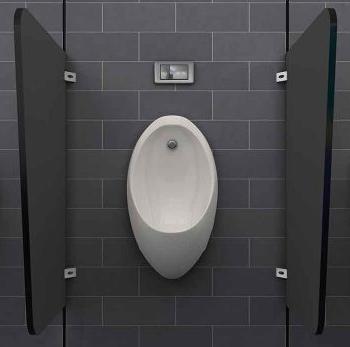In modern commercial spaces, public restrooms are more than just a necessity—they're an extension of the brand and a reflection of hygiene standards. Among the key elements that make up a well-designed restroom are toilet cubicles. These often-overlooked fixtures play a pivotal role in enhancing privacy, aesthetics, and overall functionality. Whether in office buildings, shopping malls, schools, or recreational facilities, choosing the right toilet cubicles can significantly impact user experience.
The Importance of Toilet Cubicles in Public Restrooms
Toilet cubicles are designed to offer privacy in shared spaces. Without proper partitions, the user’s sense of comfort is compromised. Cubicles make it possible to efficiently use space while maintaining discretion for users, offering an environment where people feel at ease.
In recent years, there has been a growing trend toward designing restrooms that are visually appealing, eco-friendly, and hygienic. Here, toilet cubicles play a crucial role, balancing both design and practical considerations.
Key Considerations When Choosing Toilet Cubicles
When selecting toilet cubicles for any facility, several factors should be taken into account:
1. Durability
Toilet cubicles in high-traffic areas require durability to withstand daily use. Materials like high-pressure laminate (HPL), compact laminate, and stainless steel are popular choices due to their resistance to moisture, impact, and wear. Durability is particularly essential in schools, airports, and public facilities where restrooms see heavy foot traffic.
2. Design and Aesthetics
Gone are the days when public restrooms were designed solely for utility. Today, businesses and property owners recognize the importance of cohesive restroom designs that align with the overall decor of the building. Modern toilet cubicles come in various colors, finishes, and styles to suit different interior design preferences. Whether you prefer sleek, minimalist cubicles or bold, vibrant colors, the options are vast.
3. Space Efficiency
Toilet cubicles offer a smart way to maximize the available space in restrooms. Facilities with limited floor space benefit from cubicle systems that allow for multiple stalls without making the area feel cramped. Some designs even include corner or customized cubicles to fit oddly shaped or small rooms.
4. Hygiene
In public restrooms, hygiene is a top priority. Certain materials, like phenolic and solid-grade laminates, have antibacterial properties that help prevent the growth of bacteria and fungi. Additionally, seamless designs reduce crevices where dirt can accumulate, making cleaning easier and more effective. Some cubicles come equipped with touchless door systems or antimicrobial coatings to further enhance hygiene.
5. Water Resistance
Moisture in restrooms is inevitable, especially in spaces with showers or high humidity levels, such as gyms and swimming pools. Choosing water-resistant materials like compact laminate or solid phenolic panels ensures that the cubicles won’t warp, swell, or deteriorate over time due to exposure to water.
6. Accessibility
In today’s world, inclusivity is essential. When designing public restrooms, it’s crucial to provide accessible cubicles that accommodate individuals with disabilities. These cubicles should feature wider doors, grab bars, and enough space for wheelchair users to maneuver comfortably. Incorporating such designs ensures compliance with accessibility standards while making restrooms usable for everyone.
7. Privacy and Security
Users value privacy in public restrooms, and a well-designed cubicle offers just that. Modern cubicles often come with full-length doors and minimal gaps between panels to enhance user comfort. Lock systems should be secure yet easy to operate, ensuring that users feel safe while using the facilities.
Popular Materials for Toilet Cubicles
The material of Toilet Cubicle Manufacturer plays a significant role in determining their durability, appearance, and ease of maintenance. Here are some commonly used materials in toilet cubicle manufacturing:
1. High-pressure laminate (HPL)
HPL is one of the most widely used materials for toilet cubicles. It's available in various colours and textures, allowing for a high degree of customization. HPL cubicles are known for their durability, moisture resistance, and scratch-resistant properties, making them ideal for commercial and public settings.
2. Compact Laminate
Compact laminate is an extremely durable material that’s perfect for areas with heavy usage and high humidity. Made from multiple layers of kraft paper impregnated with resin, it offers excellent impact and moisture resistance. It’s a common choice in schools, gyms, and other high-traffic facilities.
3. Solid Surface
Solid surface materials, such as Corian, are known for their seamless appearance and easy maintenance. These cubicles are scratch-resistant and non-porous, which means they’re highly hygienic and easy to clean.
4. Stainless Steel
Stainless steel cubicles are sleek and modern, often seen in high-end commercial spaces. They offer excellent resistance to vandalism and wear, making them a good option for public spaces where durability is crucial. However, they require more maintenance to keep fingerprints and smudges at bay.
5. Glass
Glass cubicles provide a modern, sophisticated look and are often used in premium office buildings or luxury hotels. Frosted or tinted glass offers privacy while adding a touch of elegance. Glass cubicles, though visually appealing, may require more careful maintenance to avoid chips or cracks.
Benefits of Modern Toilet Cubicle Systems
Investing in high-quality toilet cubicle systems offers several benefits for businesses and property managers:
Cost-Effectiveness: Durable materials require less frequent replacement, lowering long-term costs.
Enhanced User Experience: Sleek, well-maintained restrooms leave a positive impression on visitors, improving your facility's reputation.
Easy Maintenance: With modern materials designed for easy cleaning and water resistance, facility managers can maintain a high level of hygiene with minimal effort.
Customizable Designs: From colors to materials, modern cubicles can be tailored to suit the aesthetic needs of the facility, complementing the overall design scheme.
Trends in Toilet Cubicle Design
As public restroom designs continue to evolve, toilet cubicles are being integrated into more creative, user-friendly spaces. Here are some trends shaping the future of toilet cubicle design:
Sustainability: Many manufacturers now focus on using eco-friendly materials and production processes to minimize environmental impact.
Touchless Solutions: To improve hygiene, touchless door systems and flush mechanisms are becoming more common in modern cubicles.
Bold Colors and Graphics: Rather than sticking to neutral tones, some restrooms feature vibrant colours or even artwork on cubicle doors to make the space more engaging.
Conclusion
Toilet Cubicle Manufacturers are an essential component of modern public restrooms, contributing not only to privacy and functionality but also to aesthetics and hygiene. Whether you're designing a restroom for an office, school, or commercial facility, selecting the right cubicles can elevate the user experience and ensure long-lasting durability. By considering factors like material, design, and accessibility, you can create a restroom space that is both practical and visually appealing.

